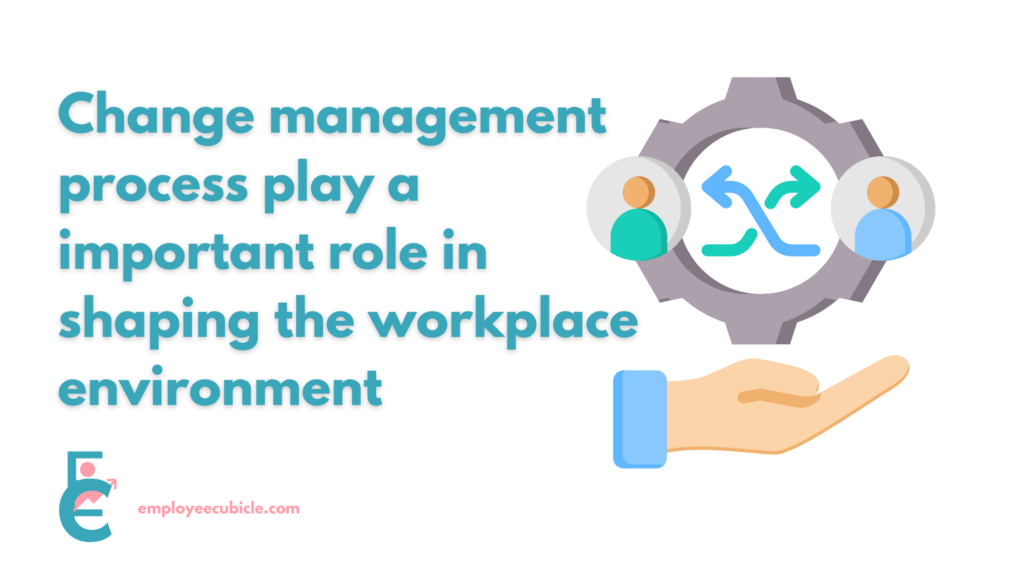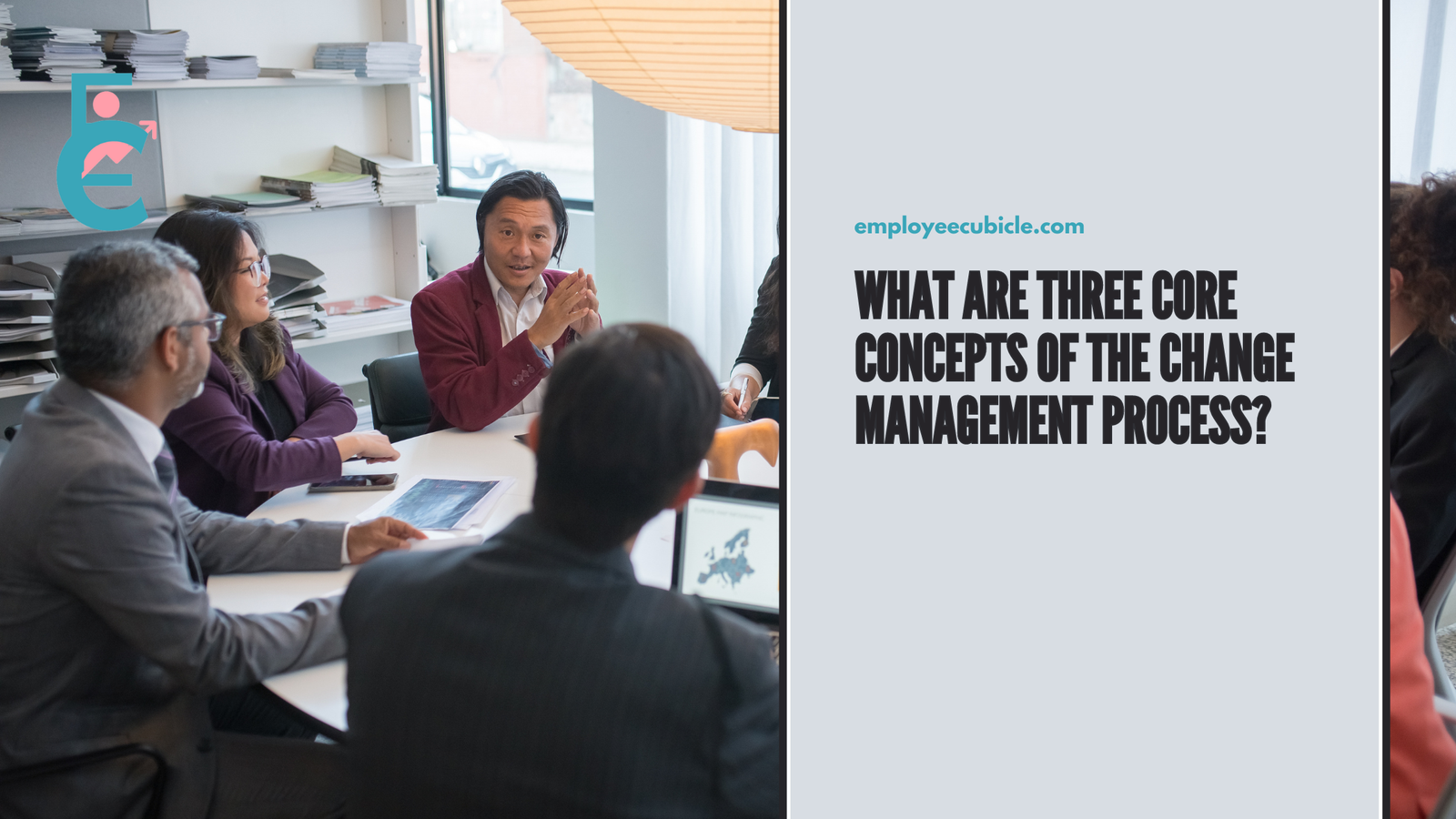Change is more than a ripple; it’s a transformative wave that sweeps across organizations. In the heart of this transformative journey lies the crucial concept of change management. So, what exactly is change management process, and why is it pivotal for both employees and HR professionals? Let’s break it down.
What is the Change Management change management process?
The Change Management process is a structured approach to transitioning individuals, teams, and organizations from the current state to a desired future state. It involves planning, implementing, and monitoring changes to ensure they are effectively adopted and lead to the desired outcomes.
Here’s a closer look:
- Structured Approach: Change management involves a methodical and planned approach to guide organizations through transitions.
- Maximizing Benefits: Its goal is not just to survive change but to thrive in it, extracting maximum benefits for the organization and its people.
How does the change management process impact employees ?
Change management process play a important role in shaping the workplace environment, and their impact on employees is profound. Here are the points for change management process impact employees:
- Shift in Job Responsibilities 🔄
One of the primary ways change management influences employees is through a shift in job responsibilities. As organizations adapt to new strategies or technologies, employees may find themselves taking on different tasks or even embracing entirely new roles. This shift can bring a mix of challenges and opportunities, requiring adaptability and a willingness to learn.
- Emotional Rollercoaster 🎢
Change can be an emotional rollercoaster for employees. Uncertainty about the future, concerns about job security, or the fear of the unknown can lead to anxiety and stress. On the positive side, some employees thrive in dynamic environments, finding excitement and motivation in the face of change. Acknowledging and addressing these emotional aspects is crucial for maintaining a healthy work atmosphere.
- Team Dynamics and Collaboration 🤝
The change management process significantly influences team dynamics and collaboration. Employees may need to work more closely with colleagues from different departments or teams to achieve common goals. This can foster a sense of unity and shared purpose, breaking down silos and promoting a collaborative culture within the organization.
- Increased Workload and Time Management 📊
Introducing changes often comes with an increased workload as employees adapt to new processes or systems. This can impact time management and productivity. Employees might need to reassess their priorities, refine their time-management skills, and learn to balance existing tasks with the demands of the changing landscape.
- Professional Development Opportunities 🚀
Change can bring about opportunities for professional development. New projects, technologies, or methodologies may require employees to acquire new skills. Organizations that support their employees during these transitions by offering training and development programs create a positive environment that encourages continuous learning.
Embracing change becomes not just a necessity but a pathway to growth and success.
What are the three concept of change management process?
Navigating change within an organization requires a thoughtful approach, encapsulated by the three core concepts of the change management process. Let’s delve into these concepts and unravel the intricacies that make change not just manageable but a catalyst for growth.
1. Clear Communication 📢
Effective communication is the bedrock of any successful change management process. When organizations communicate changes transparently and consistently, employees and HRs can better understand the reasons behind the shift, fostering a sense of trust and reducing uncertainty. This concept involves:
- Regular Updates: Keeping everyone informed at every stage of the change process.
- Open Channels: Establishing platforms for questions, feedback, and concerns.
- Clarity in Messaging: Ensuring that the information is conveyed in a straightforward and easily understandable manner.
2. Employee Involvement 🙌
Involving employees in the change process empowers them and fosters a sense of ownership. When employees feel their opinions are valued, they are more likely to embrace and adapt to the changes. This concept encompasses:
- Feedback Mechanisms: Creating avenues for employees to provide input and suggestions.
- Task Force Inclusion: Involving employees in the planning and decision-making process.
- Recognition of Efforts: Acknowledging and celebrating milestones and contributions.
3. Leadership Support 🌐
Leadership plays a pivotal role in steering the organization through change. When leaders actively support and champion the change, it sets the tone for the entire workforce. This involves:
- Visible Leadership: Leaders actively demonstrating their commitment to the change.
- Resource Allocation: Ensuring that the necessary resources and support are provided.
- Leading by Example: Embodying the values and behaviors expected during the transition.
By embracing these three core concepts of the change management process, organizations can transform what might initially seem like a daunting challenge into an opportunity for positive transformation. Clear communication, employee involvement, and leadership support create a robust framework that paves the way for a smoother and more successful journey through change. After all, change is not just about adapting—it’s about thriving in the face of evolution. 🚀

How to Overcome Challenges of change management process?
Navigating the turbulent waters of change within an organization can be challenging, but understanding and overcoming these hurdles is crucial for a successful transformation. Let’s explore the common challenges associated with the change management process and how organizations can surmount them.
- Resistance to Change 🛑
- Impact on Employees:
- Uncertainty and Fear: Change often brings uncertainty about the future, leading to fear among employees.
- Comfort with the Status Quo: Resistance can stem from a reluctance to depart from familiar routines and practices.
- Overcoming Strategy:
- Clear Communication: Communicate the reasons for the change transparently.
- Employee Involvement: Include employees in the decision-making process to instill a sense of ownership.
- Impact on Employees:
- Lack of Resources and Support 🤝
- Impact on Employees:
- Feeling Overwhelmed: Employees may feel overwhelmed by new tasks without adequate support.
- Resource Constraints: Insufficient resources can hinder the implementation of change initiatives.
- Overcoming Strategy:
- Leadership Support: Ensure leaders actively champion the change and allocate necessary resources.
- Training Programs: Provide training to equip employees with the skills needed for the changes.
- Impact on Employees:
- Communication Breakdown 📡
- Impact on Employees:
- Misinformation: Inadequate communication can lead to rumors and misinformation.
- Lack of Clarity: Unclear communication can leave employees confused about the purpose and impact of the change.
- Overcoming Strategy:
- Open Channels: Establish clear channels for two-way communication.
- Regular Updates: Provide consistent updates to keep everyone informed and aligned.
- Impact on Employees:
- Lack of Employee Engagement 🤹♂️
- Impact on Employees:
- Demotivation: Perceived lack of involvement can demotivate employees.
- Loss of Morale: Low engagement may result in a decrease in overall morale.
- Overcoming Strategy:
- Inclusive Decision-Making: Involve employees in the change process to enhance engagement.
- Recognition: Acknowledge and celebrate achievements and efforts during the transition.
- Impact on Employees:
Overcoming these challenges requires a strategic approach that incorporates the three core concepts of the change management process: clear communication, employee involvement, and leadership support. By addressing resistance, providing resources, fostering effective communication, and enhancing employee engagement, organizations can navigate the complexities of change with resilience and success. 🌟
What are Future Trends in change management process?
The landscape of change management is evolving, and understanding the future trends is essential for organizations aiming to stay ahead of the curve. Let’s explore the upcoming trends in the change management process and their potential impact on employees.
- Technology Integration 🤖
Impact on Employees:
- Upskilling Opportunities: Integration of new technologies may require employees to acquire new skills.
- Increased Efficiency: Technology-driven processes can streamline tasks, making work more efficient.
Future Trend:
- Automation and AI: Embracing automation and artificial intelligence to enhance operational efficiency.
- Digital Collaboration Tools: Implementing advanced tools for seamless remote collaboration.
2. Emphasis on Employee Well-being 🌱
Impact on Employees:
- Stress and Burnout: Change can contribute to stress, impacting employee well-being.
- Work-Life Balance: The need for balance becomes crucial during times of significant change.
Future Trend:
- Well-being Programs: Integrating well-being initiatives into the change management process.
- Flexible Work Arrangements: Offering flexibility to support a healthier work-life balance.
3. Data-Driven Decision-Making 📊
Impact on Employees:
- Informed Decision-Making: Employees may feel more confident when decisions are based on data.
- Increased Accountability: Transparent use of data can foster a sense of accountability.
Future Trend:
- Analytics in Change Management: Leveraging data analytics to assess the impact of change.
- Employee Feedback Platforms: Implementing platforms that gather and analyze employee feedback for informed decision-making.
4. Agile and Iterative Approaches 🔄
Impact on Employees:
- Adaptability: Employees need to be adaptable to frequent changes in project direction.
- Continuous Learning: Embracing a mindset of continuous learning becomes essential.
Future Trend:
- Agile Methodologies: Applying agile approaches to change management for more responsive and flexible processes.
- Iterative Feedback Loops: Establishing continuous feedback loops for ongoing improvement.
The future of change management holds exciting possibilities, driven by technology, a focus on well-being, data-driven decision-making, and agile methodologies. For employees and HR professionals, staying informed about these trends is key to navigating the changing landscape successfully. As organizations adopt these evolving practices, the collaboration between employees and HRs becomes crucial in ensuring a smooth and positive transition into the future of change management. 🌐
Conclusion
As we draw the curtains on our exploration of the change management process and its profound impact on both organizations and the invaluable individuals within them, let’s recap the essence encapsulated in the question: What are three core concepts of the change management process? In this brief journey, we’ve uncovered the magic behind these concepts. They’re not just strategies; they’re the secret sauce that turns challenges into opportunities.
Share your thoughts on the three core concepts and the evolving landscape of change management in the comments below.



